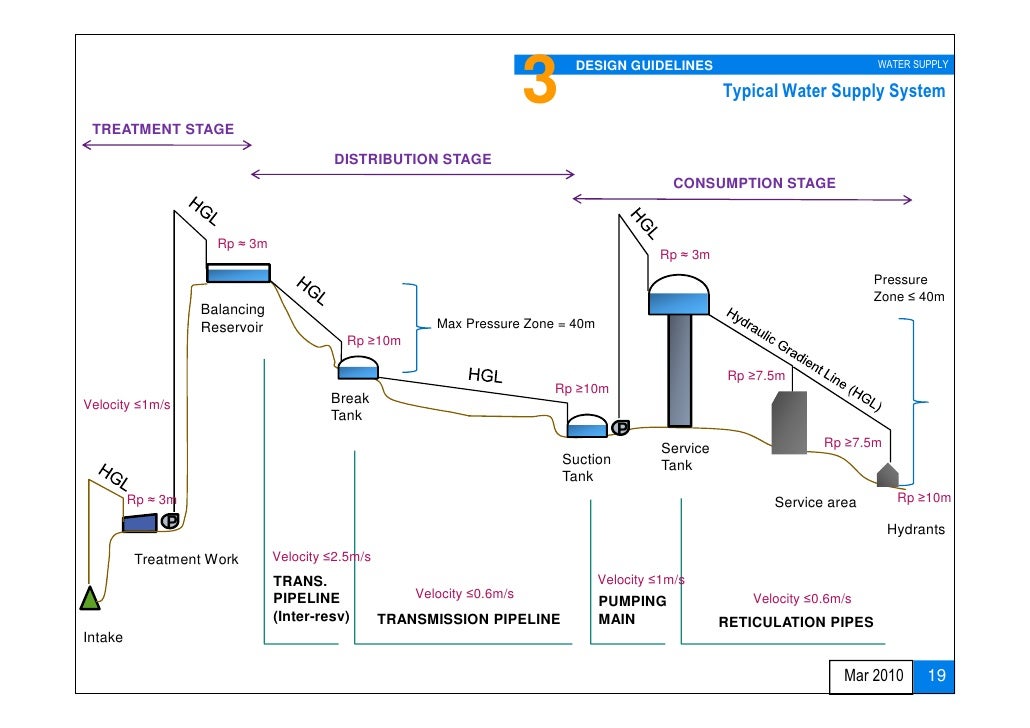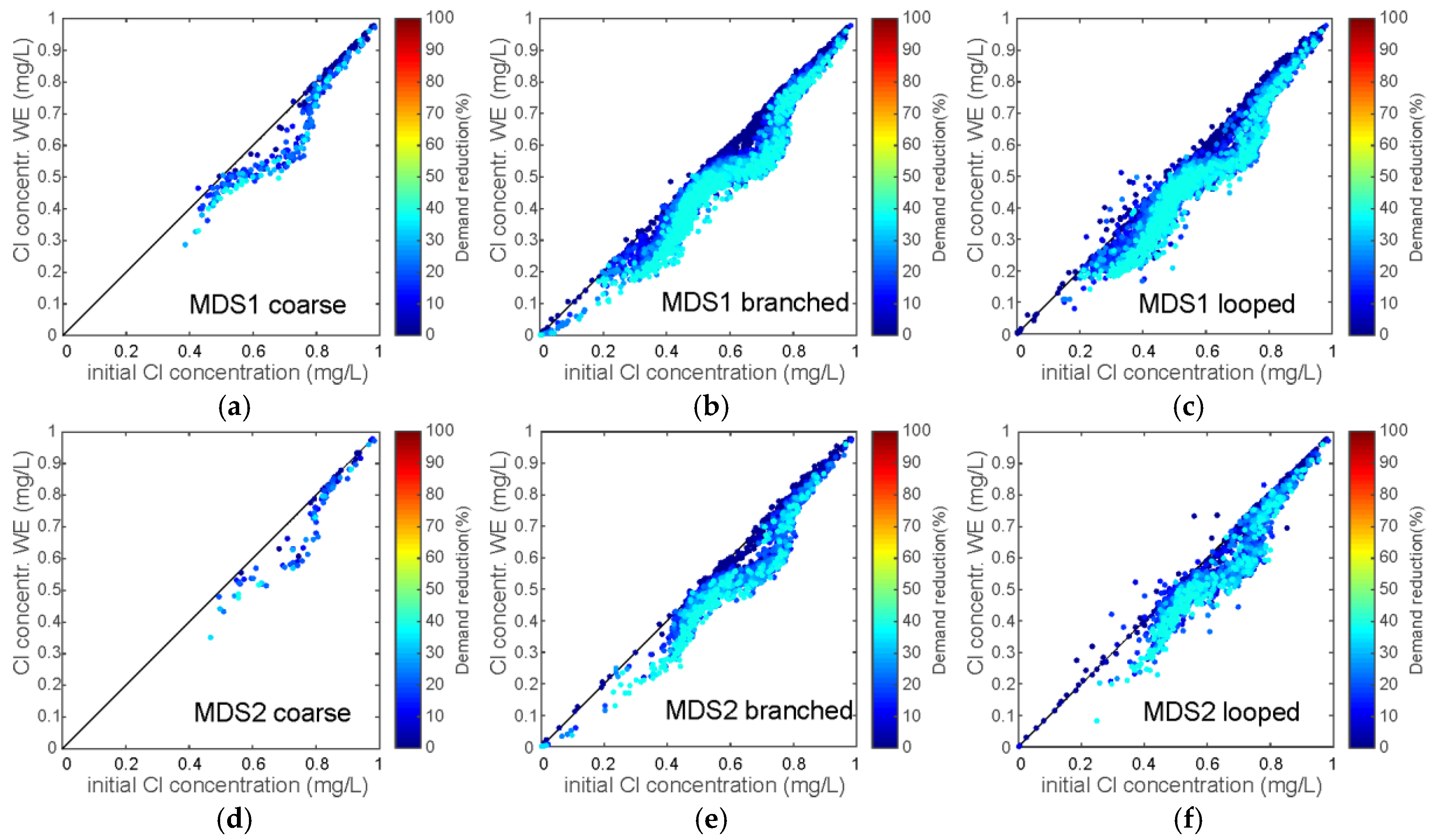DWSS - Part 2 Ch1 – Water Demand Ch1 - 1/14 Chapter 1. Water Demand What you will learn Estimate the different information needed to define precisely the water demand of a community. Why This will give the term of reference for the complete Water Supply System, make it working or not, sustainable or not. Duration of chapter 1. English Afrikaans Albanian Arabic Basque Bosnian Catalan Chinese (Simplified) Chinese (Traditional) Croatian Czech Danish Dutch Filipino Finnish French German Greek Hebrew Hindi Hungarian Indonesian Italian Japanese Korean Lithuanian Mongolian Norwegian Persian Polish Portuguese Romanian Russian Spanish Swedish Tamil Thai Turkish Ukrainian Urdu Vietnamese.
Calculating expected demand of water supply in service lines
The total theoretical demand for a water supply system can easily be calculated by adding known maximum demand for all fixtures in the system. Due to the nature of intermittent use this will unfortunate add up to unrealistic demands for the main supply service lines. A realistic demand for a supply system will always be far less than the total theoretical demand.
Expected demand in a water supply system can be estimated as
- Aquaculture Engineering (2+1) Participants. Expected Learning Outcome. Water supply systems - canals. Water control structures or Gates. Computation of discharge through sluices. Water supply systems - Types of canals. Canals - Formula.
- P2901.2 Identification of nonpotable water systems. Where nonpotable water systems are installed, the piping conveying the nonpotable water shall be identified either by color mark-ing, metal tags or tape in accordance with Sections P2901.2.1 through P2901.2.2.3. P2901.2.1 Signage required. Nonpotable water outlets.
qet = qnl + 0.015 ( Σqn - qnl ) + 0.17 ( Σqn - qnl )1/2 (1)
where
2.1 Demanddesign Water Supply Systems
qet = expected total water flow (l/s)
qnl = demand of largest consumer (l/s)
Σqn = total theoretical water flow - all fixtures summarized (l/s)
Note that minimum expected total water flow can never be less than the demand from the largest fixture. This equation is valid for ordinary systems with consumption patterns like
- homes
- offices
- nursing homes
- etc.
Be aware when using the equation for systems serving large groups of people where the use is intermittent, like in
- hotels
- hospitals
- schools
- theaters
- wardrobes in factories
- etc
For these kind of applications, like a wardrobe, it is likely that all showers are used at the same time. Using the formula blindly would result in insufficient supply lines.
Example - Main Water Supply to a Nursing Home
If the theoretical demand from all fixtures in a nursing home adds up to 50 l/s and the larges fixture requires 0.4 l/s, the expected water supply demand can be estimated like

qet = (0.4 l/s) + 0.015 ((50 l/s) - (0.4 l/s)) + 0.17 ((50 l/s) - (0.4 l/s))1/2
= 2.3 (l/s)

Total Theoretical Water Flow and Expected Flow
Expected demand for a supply system at different total theoretical demand can based on the formula above be expressed as
Demand Supply And Price
| Total Theoretical Demand Summarized (liter/s) | Expected Demand (liter/s) |
|---|---|
| 0.2 | 0.2 |
| 0.8 | 0.4 |
| 1.6 | 0.5 |
| 4.0 | 0.6 |
| 8.0 | 0.85 |
| 15 | 1.1 |
| 20 | 1.5 |
| 30 | 1.8 |
| 40 | 2.1 |
| 65 | 2.8 |
| 70 | 2.9 |
| 100 | 3.7 |
2.1 Demanddesign Water Supply System
The maximum fixture load is 0.2 liter/s.
Related Topics
- Water Systems - Hot and cold water service systems - design properties, capacities, sizing and more
Related Documents
- Cross-Contamination Control - It is fundamental to keep the potable water in the water supply systems uncontaminated
- Domestic Hot Water Service Systems - Design Procedure - Design procedure for domestic hot water service systems
- Fixture Units - WSFU vs GPM and Liters/sec - Converting WSFU - Water Supply Fixture Units - to GPM
- Fixture Water Requirements - Water outlets demand
- Online Design of Water Supply Systems - Online design tool for a water supply system
- PE Water Supply Pipes - Properties - Nominal pipe size, outside diameter, wall thickness, weight and working pressure
- Sizing Water Supply Lines - Sizing water supply service and distribution lines based on Water Supply Fixture Units (WSFU)
- Water - Human Activity and Consumption - Activity and average water consumption
- Water Distribution Pipes - Materials used in water distribution pipes
- Water Service Pipe Lines - Water service pipe lines extends from the potable water source to the interior of buildings
- Water Supply - Fixture Units WSFU - WSFU is used to calculate water supply service systems
- Water Supply Pipe Lines - Sizing - Sizing of water supply pipe lines
- Water Supply to Public Buildings - Required water supply to public buildings
Tag Search
Supply And Demand 1
- en: water supply expected demand service lines calulating formula